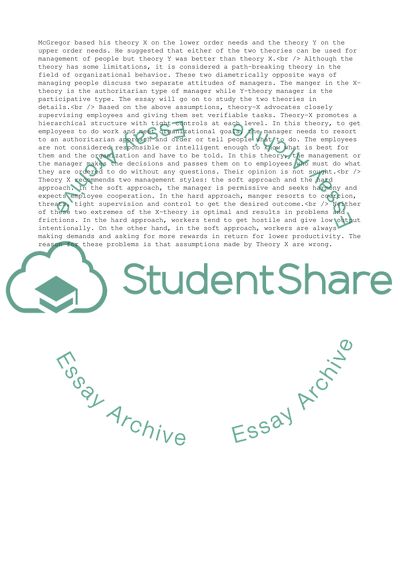Cite this document
(The X and Y Theory of Management by Douglas McGregor Coursework, n.d.)
The X and Y Theory of Management by Douglas McGregor Coursework. Retrieved from https://studentshare.org/management/1716514-douglas-mcgregor-x-y-theory
The X and Y Theory of Management by Douglas McGregor Coursework. Retrieved from https://studentshare.org/management/1716514-douglas-mcgregor-x-y-theory
(The X and Y Theory of Management by Douglas McGregor Coursework)
The X and Y Theory of Management by Douglas McGregor Coursework. https://studentshare.org/management/1716514-douglas-mcgregor-x-y-theory.
The X and Y Theory of Management by Douglas McGregor Coursework. https://studentshare.org/management/1716514-douglas-mcgregor-x-y-theory.
“The X and Y Theory of Management by Douglas McGregor Coursework”, n.d. https://studentshare.org/management/1716514-douglas-mcgregor-x-y-theory.


